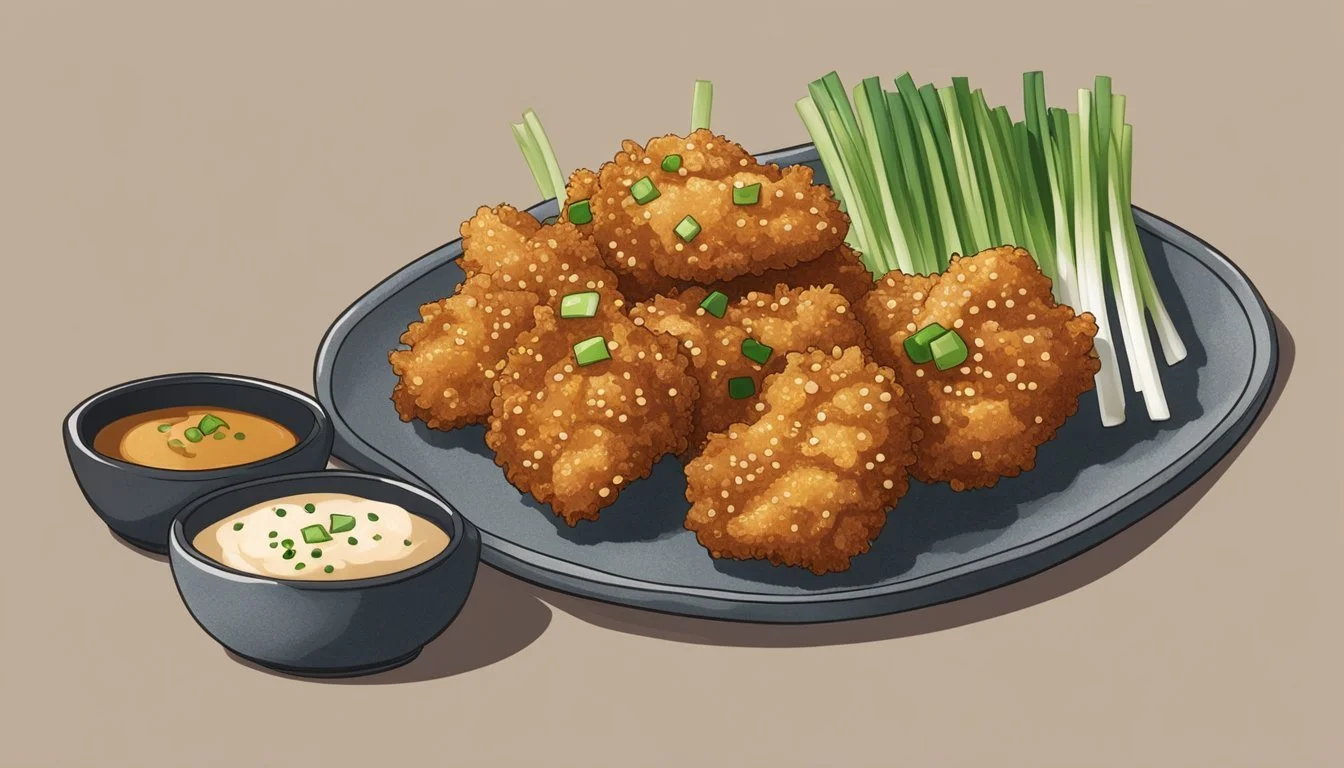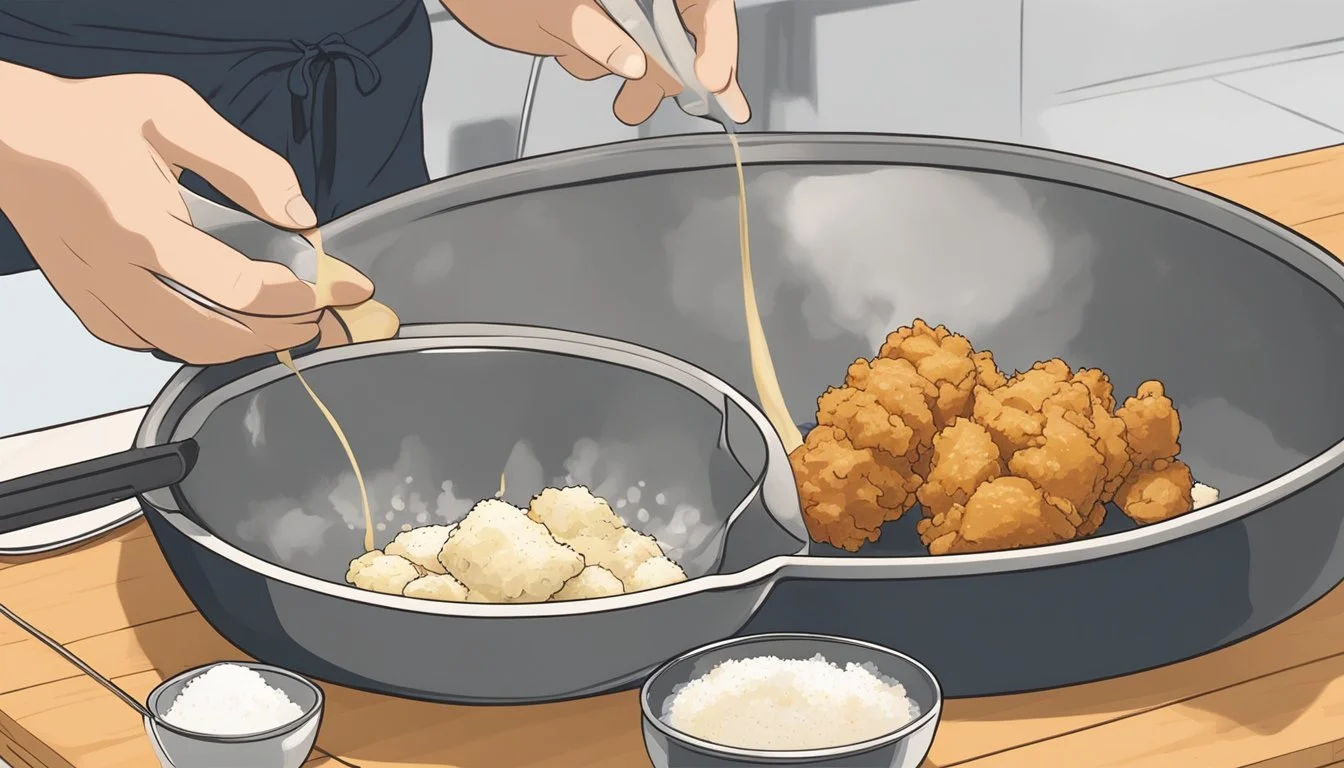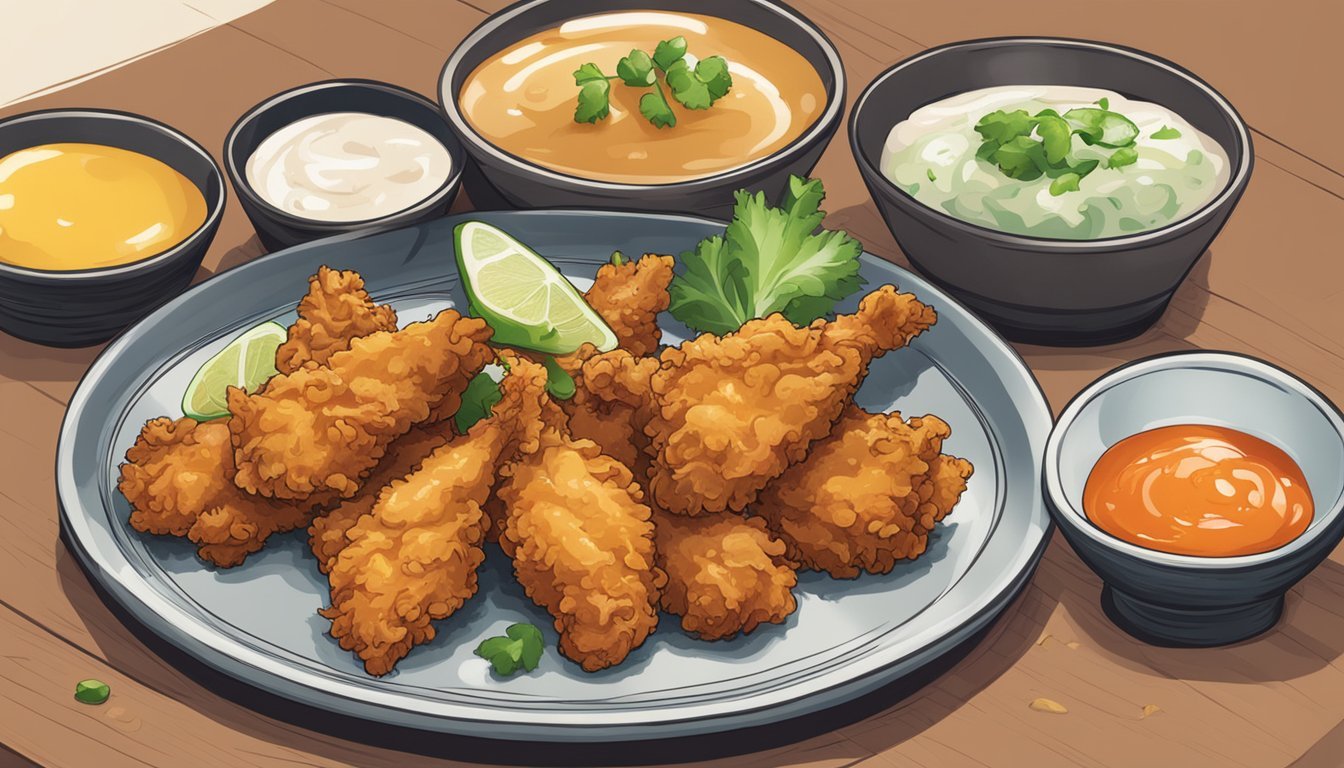How Long Does Chicken Karaage Last?
Storage Tips and Guidelines
Chicken Karaage is a beloved Japanese dish known for its crispy texture and savory flavor. Many home cooks wonder about its shelf life and storage methods. When stored properly in the refrigerator, chicken karaage can last up to 3-4 days. This duration ensures that the chicken remains safe to eat and retains some of its signature crunchiness.
To prolong its crispiness and taste, refrigerate chicken karaage in an airtight container after it has cooled to room temperature. Reheat it in the oven or air fryer to achieve the best results, as microwaving can make the coating soggy. If you prefer a longer storage option, freezing is an effective method. In the freezer, it can last up to one month, still maintaining its flavor when properly reheated.
Understanding how to store chicken karaage not only helps in food safety but also maximizes enjoyment of this delightful dish. Proper storage techniques ensure that every bite is as delicious as the day it was made.
Understanding Chicken Karaage
Chicken Karaage, a popular Japanese dish, combines tender marinated chicken thighs with a light and crispy coating. This section covers its origins, widespread appeal, and essential ingredients.
Origins and Popularity
Karaage has roots in Japanese cuisine dating back to the early 17th century. Initially influenced by Chinese fried dishes, it evolved into its own unique style. Its rise in popularity began in the 20th century, becoming a staple in Japanese households, restaurants, and even convenience stores.
Today, chicken karaage is enjoyed globally. Its appeal lies in its juicy interior and crunchy exterior. It's often served with lemon wedges and a variety of dipping sauces, making it a versatile dish suitable for many occasions.
Key Ingredients for Karaage
The primary ingredient for karaage is chicken thighs, chosen for their tenderness and flavor. The meat is marinated in a mixture of soy sauce, sake, ginger, and garlic, which infuses it with deep, savory notes.
After marinating, the chicken is lightly coated in a starch mixture, typically a combination of potato starch and flour. This coating gives karaage its signature crispy texture.
Marinating the chicken for at least 30 minutes enhances the flavor, while some recipes suggest up to several hours for a more intense taste. This careful preparation process is essential for achieving the perfect balance of tenderness and crispiness.
Preparation Techniques
Proper preparation of chicken karaage involves key steps such as marinating the chicken, selecting the right coating, and frying it to achieve optimal crispiness.
Marinating the Chicken
Marinating is essential for flavorful chicken karaage. Begin by cutting the chicken into bite-sized pieces, around 2 inches by 1.5 inches. Common marinade ingredients include soy sauce, sake, mirin, grated garlic, and ginger.
Place the chicken and marinade in a ziplock bag or bowl, ensuring that every piece is coated. Massage gently and let it marinate for 30 minutes to 1 hour. This allows the flavors to infuse deeply, making the chicken tender and tasty.
Choosing the Right Coating
The coating is crucial for achieving the distinctive crispy texture. Traditional karaage recipes use a combination of all-purpose flour and potato starch. Some variations include cornstarch or corn flour.
Lightly dredge the marinated chicken first in flour, dusting off excess, then coat it in potato starch for extra crunch. This double-coating method ensures the chicken remains crispy even after cooling.
Frying for Optimal Crispiness
Frying technique significantly impacts the final texture.
Heat vegetable oil in a deep pot to around 160°C (320°F) to 180°C (350°F), enough to cover the chicken pieces. Fry the chicken in batches, avoiding overcrowding to maintain consistent oil temperature.
Fry for about 5-6 minutes until the chicken reaches an internal temperature of 165°F and turns golden brown. Use chopsticks or a fork to stir occasionally, promoting even cooking. Place fried pieces on a paper towel-lined plate to absorb excess oil.
Executing these steps meticulously results in chicken karaage that is flavorful, crispy, and perfectly cooked.
Serving Suggestions
Chicken karaage can be served in various ways, depending on whether it's an appetizer or a main course. Enhance its flavor with a variety of dips and sides, and consider presentation tips to make it visually appealing.
Accompaniments and Dips
Chicken karaage pairs well with different dips and sides that highlight its savory taste. Kewpie mayo and Japanese mayonnaise are popular choices due to their rich, creamy flavors. For a touch of heat, shichimi togarashi or togarashi can be sprinkled over the mayonnaise.
Adding lemon wedges on the side provides a refreshing contrast and a burst of acidity. Sesame oil can be drizzled over the chicken for an added layer of nutty aroma and taste. Furthermore, serving karaage with a small bowl of soy sauce mixed with a dash of lemon juice makes for a tangy dipping sauce. This sets the stage for an enjoyable eating experience.
Presentation Tips
Presentation plays a crucial role in elevating the appeal of chicken karaage. Serve it on a platter lined with lettuce leaves for a pop of color and freshness. A garnish of finely chopped green onions or sesame seeds enhances both the look and taste.
Placing lemon wedges around the chicken pieces not only adds visual interest but also invites diners to squeeze fresh juice over the hot chicken. For individual servings, consider small plates with a dollop of Kewpie mayo on the side, dusted with shichimi togarashi. Each plating choice contributes to a delightful dining experience.
Storing and Shelf Life
Proper storage ensures that chicken karaage remains juicy, fresh, and flavorful for as long as possible. Refrigerating and freezing techniques are key to extending its shelf life without compromising quality.
Refrigeration Best Practices
Refrigeration Temperature: Store chicken karaage in the refrigerator at or below 40°F (4°C).
Timing: It will stay safe to eat for 3 to 4 days.
Storage Method: Use airtight containers or tightly sealable bags to maintain freshness and prevent moisture loss.
Placement: Keep it on the lower shelves, away from raw meats and vegetables to avoid cross-contamination.
Residual Heat: Ensure it's cooled to room temperature before refrigerating to prevent moisture build-up and sogginess.
Freezing and Reheating Techniques
Freezing Time: Chicken karaage can be frozen for up to six months but tastes best when eaten within 3 months.
Preparation for Freezing: Wrap individual pieces in aluminum foil or plastic wrap, and then place them in heavy-duty freezer bags to avoid freezer burn.
Labeling: Mark each bag with the freezing date for reference.
Reheating Methods: When ready to eat, reheat in an oven at 350°F (175°C) until thoroughly warm.
Avoid Microwaving: This can make the chicken less crispy. If necessary, use it only for short durations and followed by a quick broil.
Re-crisping: An oven ensures the best result, restoring the crispy exterior while retaining the juicy interior.
Health and Dietary Considerations
Chicken karaage, a popular Japanese dish, offers much to consider nutritionally and in terms of dietary restrictions. Details on its caloric content and gluten-free preparation options are critical for making informed dietary choices.
Caloric and Nutritional Information
Chicken karaage typically involves marinating chicken in a soy-based sauce, then coating it in a blend of flours before frying. This makes it a flavorful but calorie-dense dish. A single serving can contain around 300-400 calories.
To break it down further, the calories mainly come from the frying oil and the carbohydrate-rich coating. The dish also provides around 20-25 grams of protein per serving, making it quite filling. However, its fat content can be relatively high, depending on the oil and frying method used. Choosing healthier oils, such as vegetable or canola oil, can slightly reduce the fat content.
Gluten-Free and Allergy-Safe Options
For those with gluten allergies or celiac disease, it's essential to modify traditional karaage recipes. Standard recipes use all-purpose flour and cake flour, both of which contain gluten. Substituting rice flour or tapioca starch can create a gluten-free version.
Rice flour is especially useful due to its similar texture and frying properties. Tapioca starch can help achieve a crispy coating, crucial for maintaining the integrity of the dish. It's important to ensure that all other ingredients, such as soy sauce, are also gluten-free. This makes the dish safe without compromising its authentic taste.
Adopting these modifications makes chicken karaage accessible to a wider audience, including those with dietary restrictions.
Chicken Karaage Variations
Chicken Karaage offers a diversity of flavors and styles, allowing for flexibility in both ingredient choices and dietary needs. Below are insights into different cuts and flavors, as well as adaptations for special diets.
Different Cuts and Flavors
Chicken karaage traditionally uses thigh meat due to its juiciness and flavor. For a leaner option, chicken breast can be substituted, though it may require careful marinating to avoid dryness.
To enhance the karaage, add ingredients such as toasted sesame oil, mirin, sugar, or even a splash of citrus juice to the marinade. These additions bring depth and complexity to the dish.
Other variations include using skin-on pieces for a crispier texture or mixing egg into the dredging process for extra crunch. Different regions in Japan also enjoy karaage flavors ranging from garlic-heavy marinades to subtle, soy-based infusions.
Adaptations for Special Diets
For those with dietary restrictions, several adaptations can be made:
Gluten-Free: Substitute regular flour with rice flour or a gluten-free blend. Ensure soy sauce is certified gluten-free.
Low-Carb: Replace flour and starch with almond flour or grated Parmesan cheese. Use toasted sesame oil for added richness without carbs.
Vegan: Swap chicken with tofu or seitan. Use vegan soy sauce and a plant-based egg substitute for binding.
Low Sodium: Opt for low-sodium soy sauce and other condiments, marinate for a shorter time to lessen salt absorption.
By understanding these variations, one can create a delectable chicken karaage tailored to personal tastes and dietary needs.
Advanced Tips and Techniques
Refining the art of making chicken karaage can elevate the dish from delicious to extraordinary. Key techniques such as double-frying, achieving perfect juiciness, and enhancing texture are crucial for mastering this Japanese favorite.
Mastering the Double-Frying Method
Double-frying is essential for achieving maximum crispiness. Begin by frying the marinated chicken at a lower temperature, around 160°C (320°F), for about 5-6 minutes to cook it through.
Remove and let it rest for a few minutes. Heat the oil to a higher temperature, approximately 190°C (375°F), and fry again until golden brown. This method creates a crispy texture while ensuring the chicken is juicy inside. Use oils with high smoke points like canola or peanut for best results.
Achieving the Perfect Juiciness
Achieving juiciness starts with marinating the chicken. Use a mixture of soy sauce, sake, ginger, and garlic, marinating for at least 30 minutes. Not only does this infuse flavor, but it also tenderizes the meat.
During frying, maintain a consistent oil temperature to avoid drying out the chicken. After frying, let the chicken rest on a paper towel to drain excess oil, which also helps retain moisture.
Texture Enhancements
For enhanced texture, mix flours to coat the chicken. Combining all-purpose flour with potato starch adds a unique crunch. Dredge the chicken first in the flour, then in the starch, ensuring each piece is lightly coated but not overly saturated.
Adding a few drops of water to the potato starch before dredging can create clumps that enhance texture. Scoring the chicken in a crosshatch pattern also allows the marinade to penetrate deeper, contributing to the overall texture.
Cultural and Culinary Context
Chicken Karaage, a staple in Japanese cuisine, highlights deep cultural traditions and has found a cherished place globally. Its presence spans various settings, from casual snacks to essential party foods.
Chicken Karaage in Japanese Cuisine
Karaage, or Japanese-style fried chicken, holds a unique place in Japanese culinary culture. Originating in the early 20th century, it is often associated with izakayas (Japanese bars) where it is paired with drinks as a popular snack. Karaage is known for its crispy golden exterior and juicy inside, achieved by marinating the chicken in a blend of soy sauce, ginger, and garlic before dusting it with flour or potato starch and frying. This dish is also commonly found in convenience stores and supermarkets, making it accessible to all. Additionally, it's a favorite at school events and home parties, showcasing its versatility and widespread appeal. The method of preparation, often compared with tempura, emphasizes the importance of texture and flavor in Japanese dishes.
Karaage Around the World
Outside Japan, karaage has gained international popularity, featured in numerous restaurants globally. The dish's umami-rich flavor and satisfying crunch appeal to diverse palates. Many restaurants adapt the traditional recipe to cater to local tastes while maintaining the dish's essence. In Western countries, karaage is frequently highlighted in Japanese restaurants but has also made appearances in fusion cuisines, blending with local culinary practices. The versatility allows it to be served in various settings, such as festivals, food trucks, and as a bar snack, broadening its reach. This global expansion demonstrates karaage's adaptability and universal appeal, cementing its status as a beloved dish around the world.










